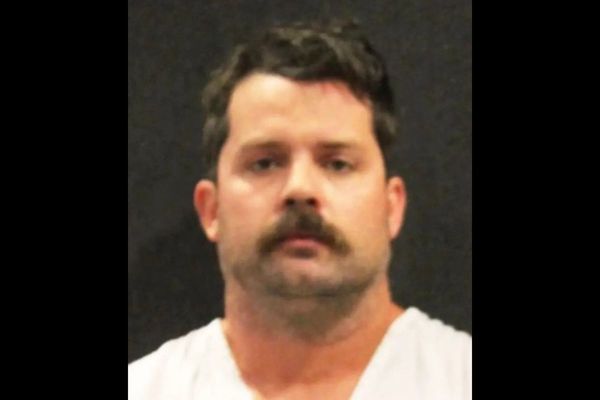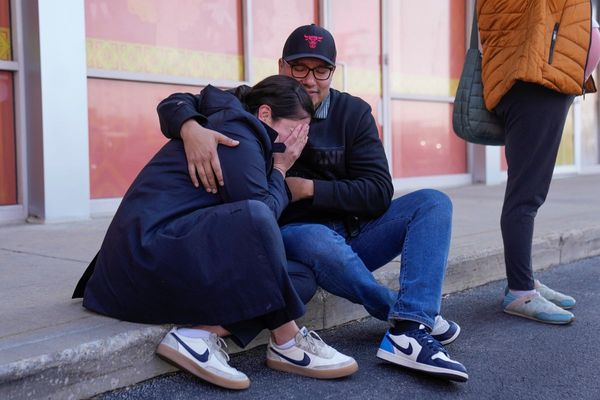
DNIPRO, Ukraine — Fresh from victories in Ukraine’s northeast and east, the Ukrainian military on Tuesday expelled Russian forces from a town in the south, a sign that its tactic of attacking in several places at once has left its adversaries off balance and losing ground.
After a weekend of significant military gains in eastern cities such as Lyman, Ukraine pushed farther into Russian-held territory, expanding its campaign in yet another direction as Moscow struggled to mount a response and hold the line.
A Ukrainian marine unit, the 35th Brigade, released a video showing soldiers waving the national flag from the steel lattice of a communications tower they said was in Davydiv Brid, a strategically important town in the Kherson region in the south.
“Glory to Ukraine! Glory to the marines!” a soldier says in the video.
The location where the video was filmed could not be independently verified, but a Russian-appointed official in the Kherson region, Volodymyr Saldo, confirmed that the Russian army had withdrawn from Davydiv Brid. And pro-war Russian bloggers warned that Russian forces in Kherson — one of four regions Moscow has illegally annexed — were facing a dire situation.
Ukrainian soldiers on the front line claimed they had captured three other villages in the south on Tuesday, a Ukrainian news outlet reported. Andriy Yermak, chief of staff to President Volodymyr Zelenskyy, appeared to confirm those advances in a Twitter post that displayed Ukrainian flags and a slice of watermelon — a symbol of the Kherson region.
But as much as Ukrainians celebrate the sight of the Russian military on its heels, Moscow’s retreat has pulled back the curtain on a panoramic wasteland left in its wake. For some Ukrainian soldiers, the victories were bittersweet. They returned to towns left in ruins after being fought over twice — first when Moscow seized them, and again when Ukraine reclaimed them.
“We are liberating land, but without people on it,” Pvt. Vitaly Zagoruyko of Ukraine lamented as he stood guard near a blown-up bridge on the Siversky Donets River.
Not that long ago, Sviatohirsk was a bustling town that catered to tourists and pilgrims visiting a revered Orthodox monastery. But on Tuesday, that seemed in the distant past as a New York Times correspondent wandered the hallways of the eerily empty Roche Royal Hotel there. Nearly every window was blown out, the hotel’s rooms and hallways littered with discarded wrappers from Russian rations and broken glass.

Sviatohirsk is in north Donetsk, one of two territories that make up the hotly contested Donbas, a prize long coveted by Moscow. Ukrainian forces are poised at the gateway to the eastern Donbas region and may have their best opportunity yet to dislodge Russian forces that expanded their control over the area after brutal combat this summer.
The next city in Ukraine’s sights may be Lysychansk, which only three months ago fell to the Russians in a demoralizing setback for Kyiv. That a battle to retake Lysychansk is even conceivable shows just how much the tables have turned in the few weeks since Ukraine launched a surprise counteroffensive in the northeastern Kharkiv region. And the relative speed of its victories is a marked contrast to Russia’s laborious gains in Donbas over the summer.
With Russian troops struggling to hold territory against Ukraine’s counteroffensives, Russian Defense Minister Sergei Shoigu said Tuesday that his country’s military had begun training more than 200,000 reservists as part of a partial mobilization launched two weeks ago, according to the state news agency Tass.
Shoigu said the recruits were being trained at 80 firing ranges before being deployed to the front lines in Ukraine, but he was unclear about when the bulk of the new recruits would be available to reinforce Russia’s faltering front line, which stretches more than 1,000 miles.
Last week, the Ukrainian military said some Russian recruits had already been deployed to fight despite having minimal training and equipment. Ukrainian soldiers have reported encountering hungry and poorly outfitted Russian troops, some with little weaponry to defend themselves.
In the short term, Western military analysts say, the mobilization appears unlikely to shift the war’s momentum. In a report released Tuesday, the Institute for the Study of War, a Washington-based research group, said the mobilization was “suffering from severe bureaucratic challenges.” The institute also cited reports of Russian men hiding in their homes to avoid being served draft notices, while tens of thousands of others have fled the country.
The organization has described the Russian military as a “chaotic agglomeration of exhausted contract soldiers, hastily mobilized reservists, conscripts and mercenaries.”
Even the pro-war Russian bloggers — who command large followings online and often have direct access to Russian troops at the front line — were raising the alarm Tuesday.
One blogger described the situation in Kherson as “critical.” Another said that bad news was on its way for Russia in the province and that its forces were vastly outnumbered. A third said that Ukrainian forces had broken through near a village on the west bank of the Dnieper River, Berislav, and would now be able to use small boats to ferry reinforcements for a further advance. As a result, Russian forces had been forced to retreat to a new defensive line.

As Ukraine retakes towns once seized by Russia, some Ukrainians who did not flee their homes when the Russians came are doing so now, heading for Russia in fear of reprisals.
Zelenskyy, seeking to limit their flight, has assured Ukrainians living in reclaimed territory that they would be treated fairly by the Ukrainian authorities.
“If a person did not serve the occupiers and did not betray Ukraine, then there is no reason to consider such a person a collaborator,” he said Monday in his nightly speech to the nation.
The question of what constitutes collaboration is not always clear, however, a complication that Zelenskyy appeared to acknowledge.
“Hundreds of thousands of our people were in the temporarily occupied territory,” he said. “Many helped our military and special services. Many simply tried to survive and waited for the return of the Ukrainian flag.”
While some Ukraininians were fleeing for Russia, others were making their way back to abandoned homes.
In Yatsivka, a quiet country village in the northeast surrounded by forests of fir, Nikolai Zakharchenko, 78, and his wife, Veronika, 76, were among the first inhabitants to return. On Tuesday, as Ukrainian tanks and howitzers rumbled through on their way to the front, the couple looked on in disbelief at the destruction. Their home was in ruins. So was their small cafe and motel.
“I don’t know how to fix this,” Zakharchenko said.
View original article on nytimes.com
© 2022 THE NEW YORK TIMES COMPANY







